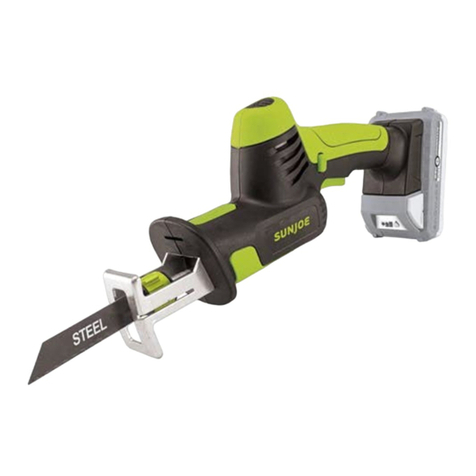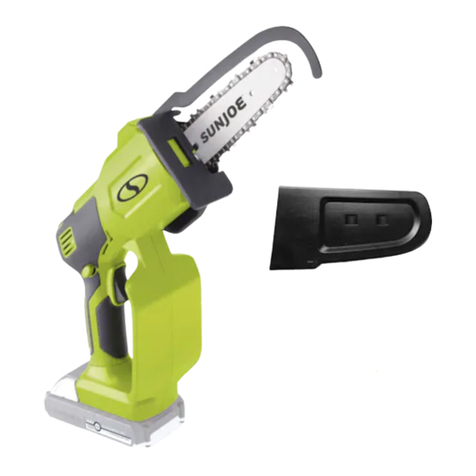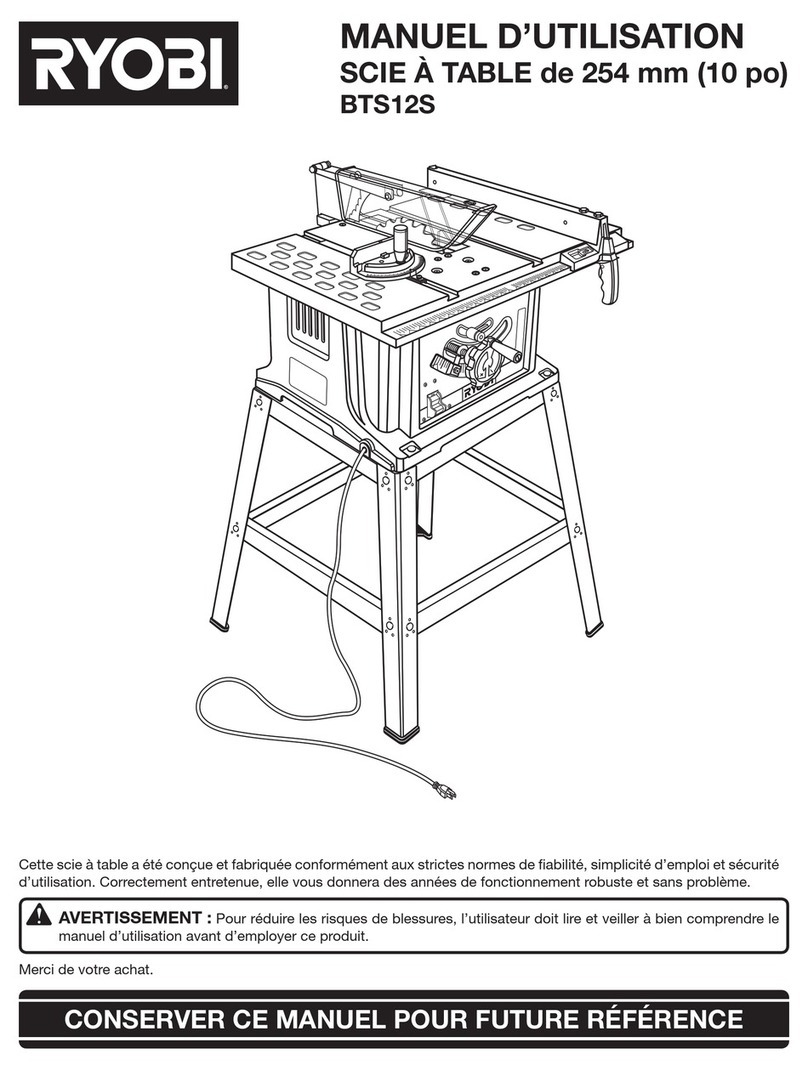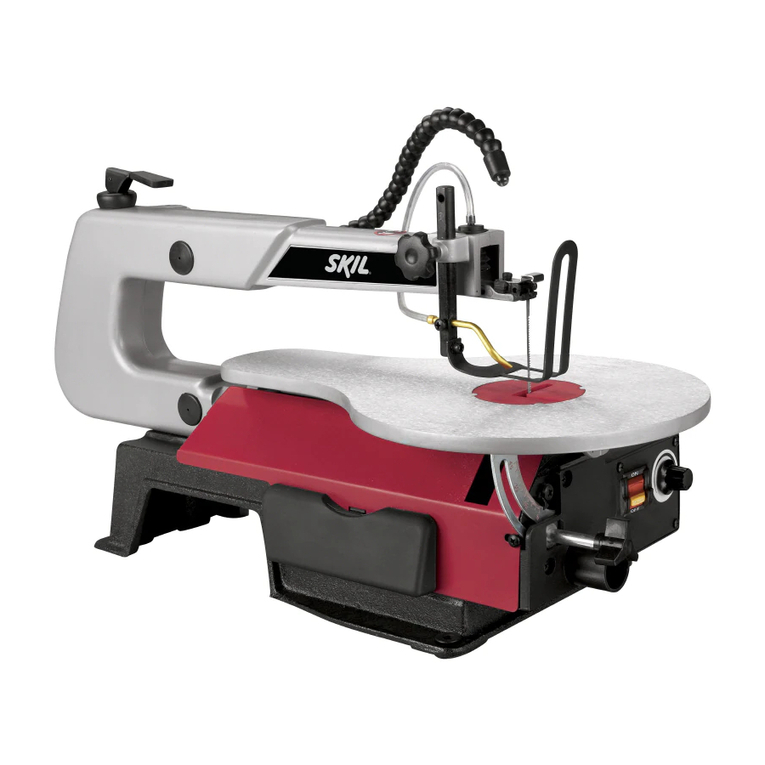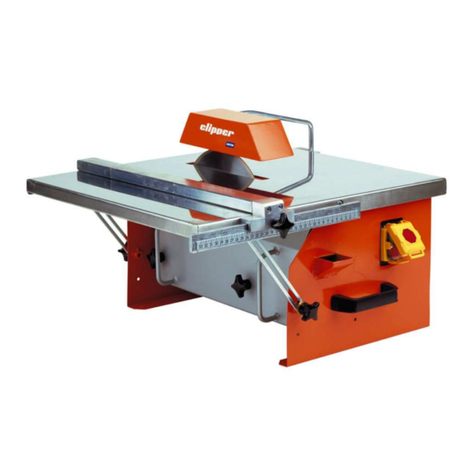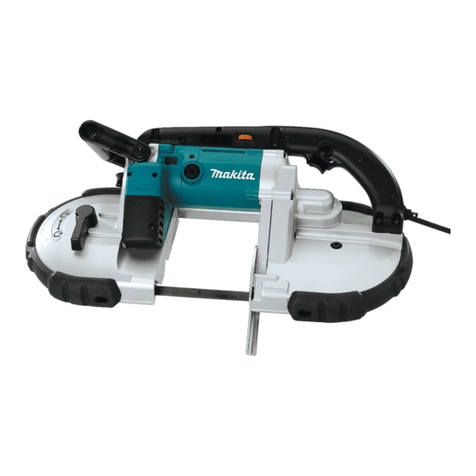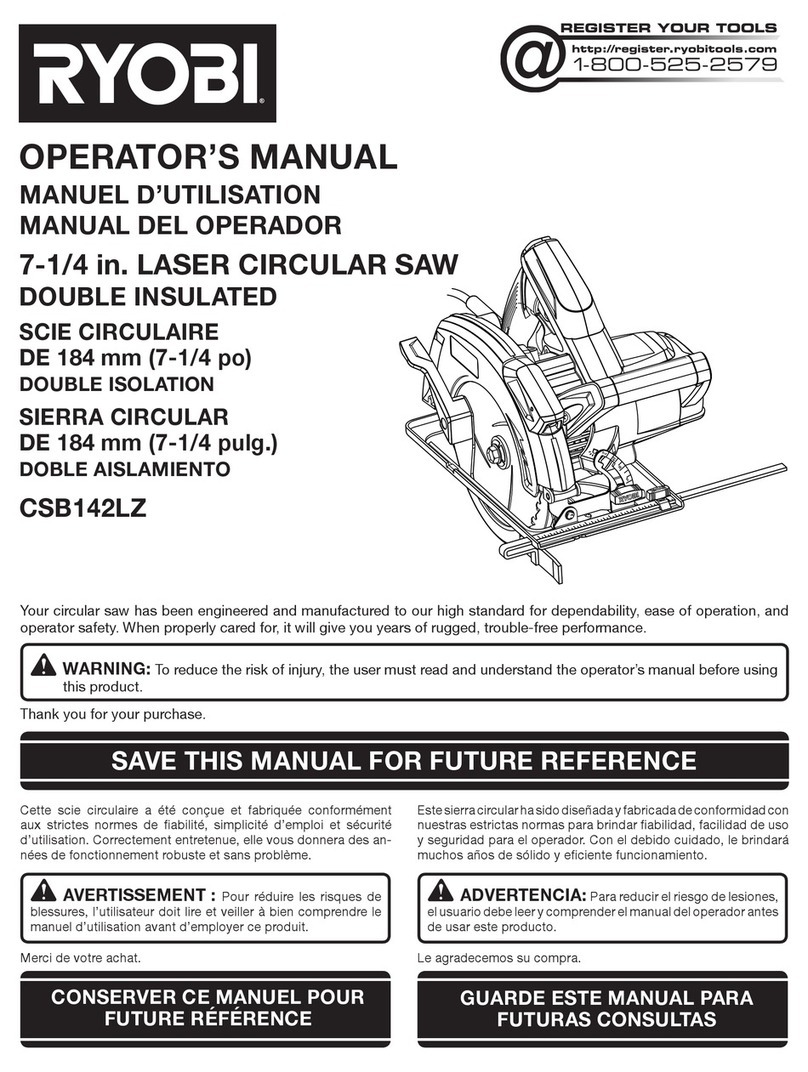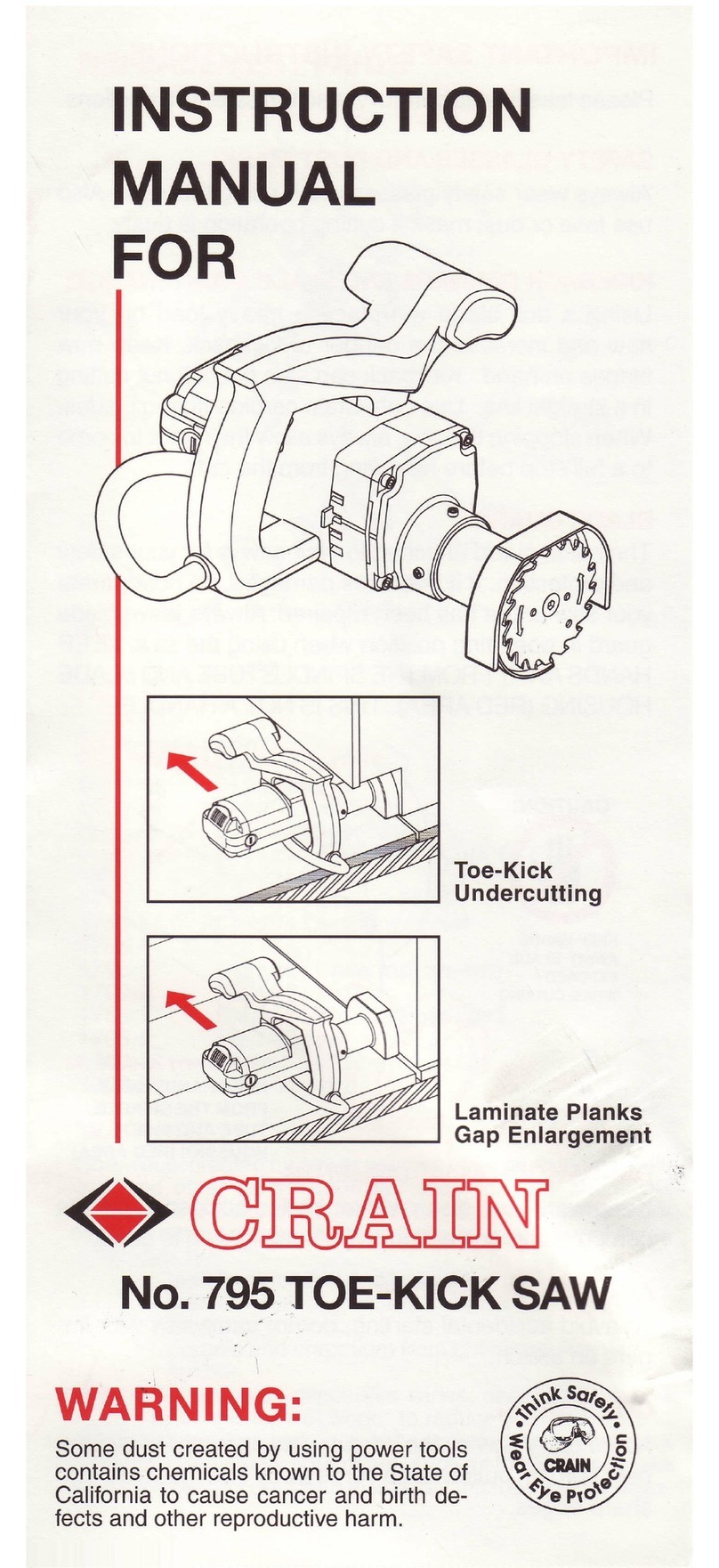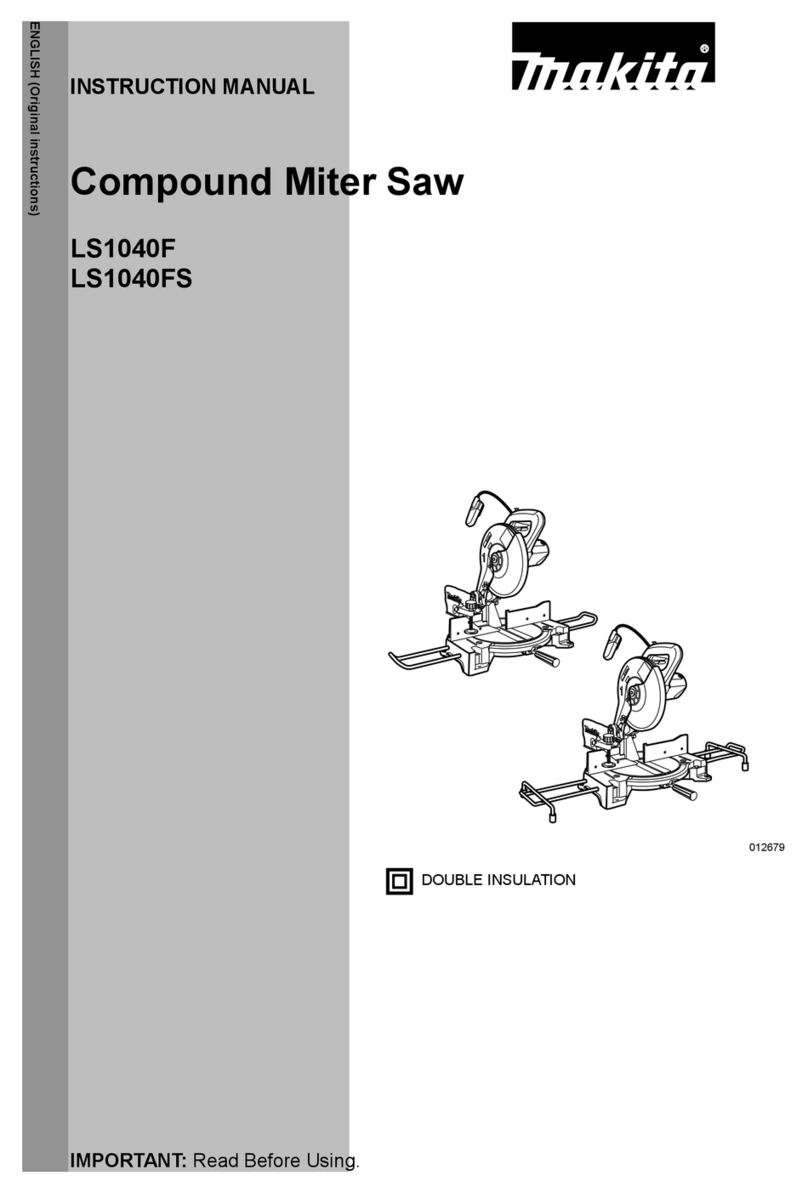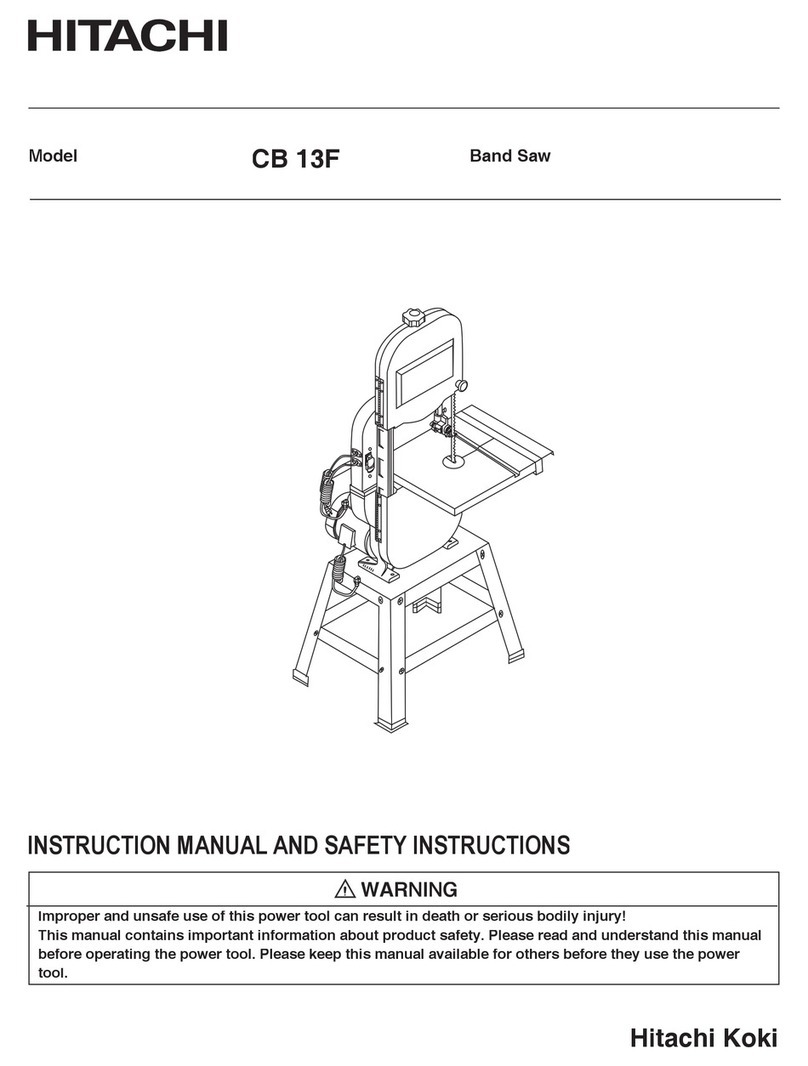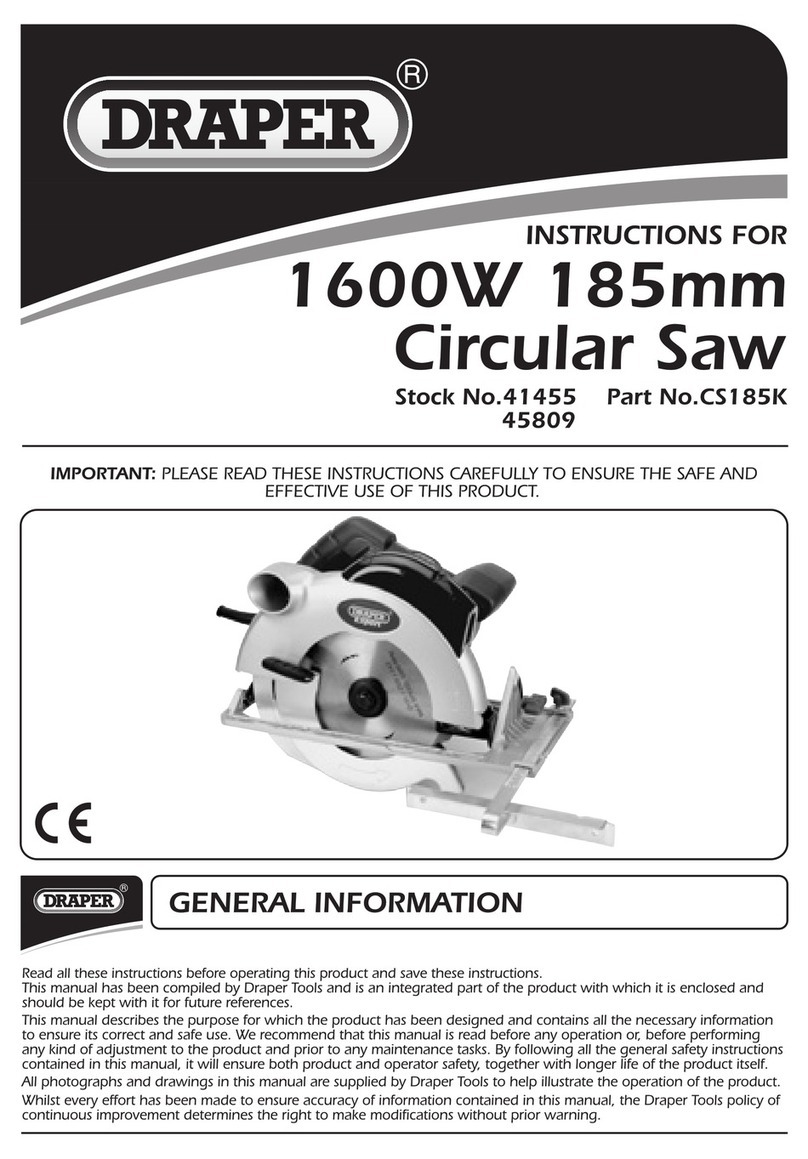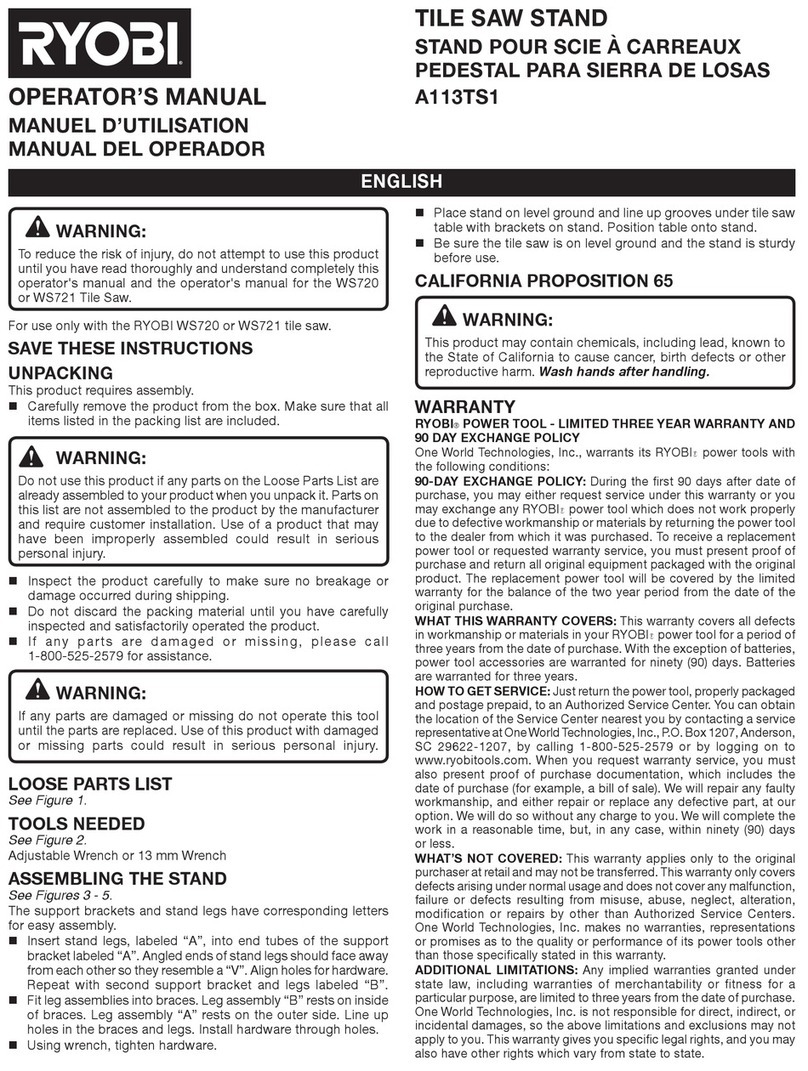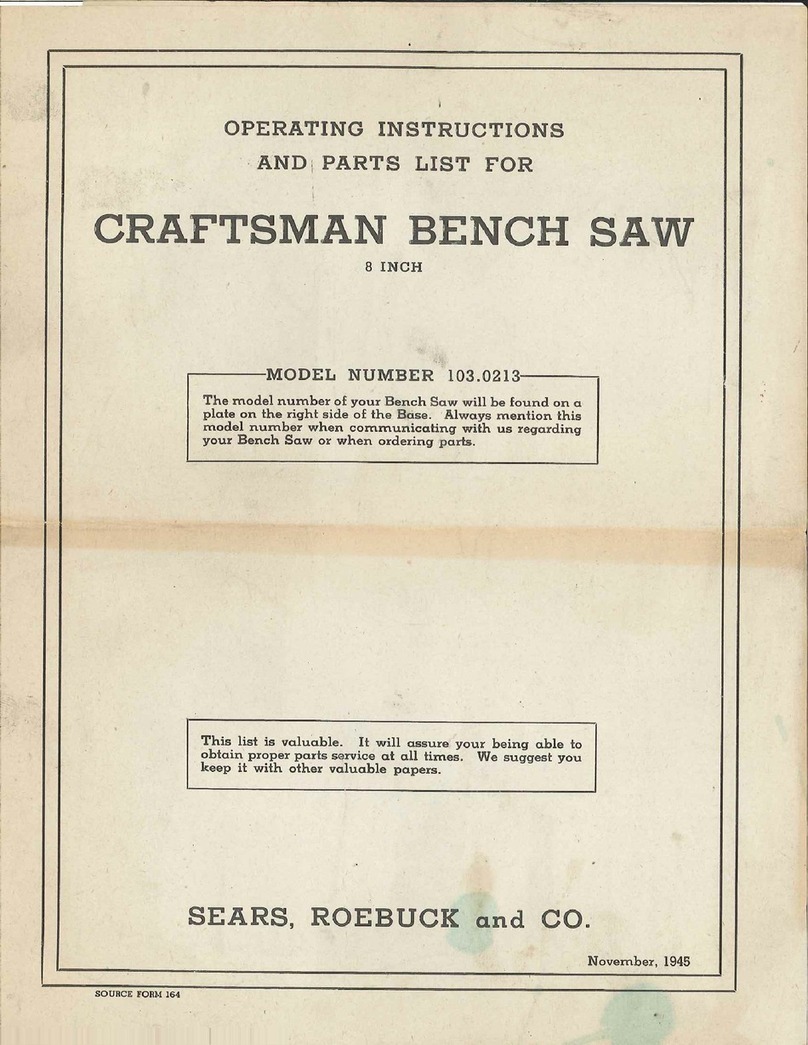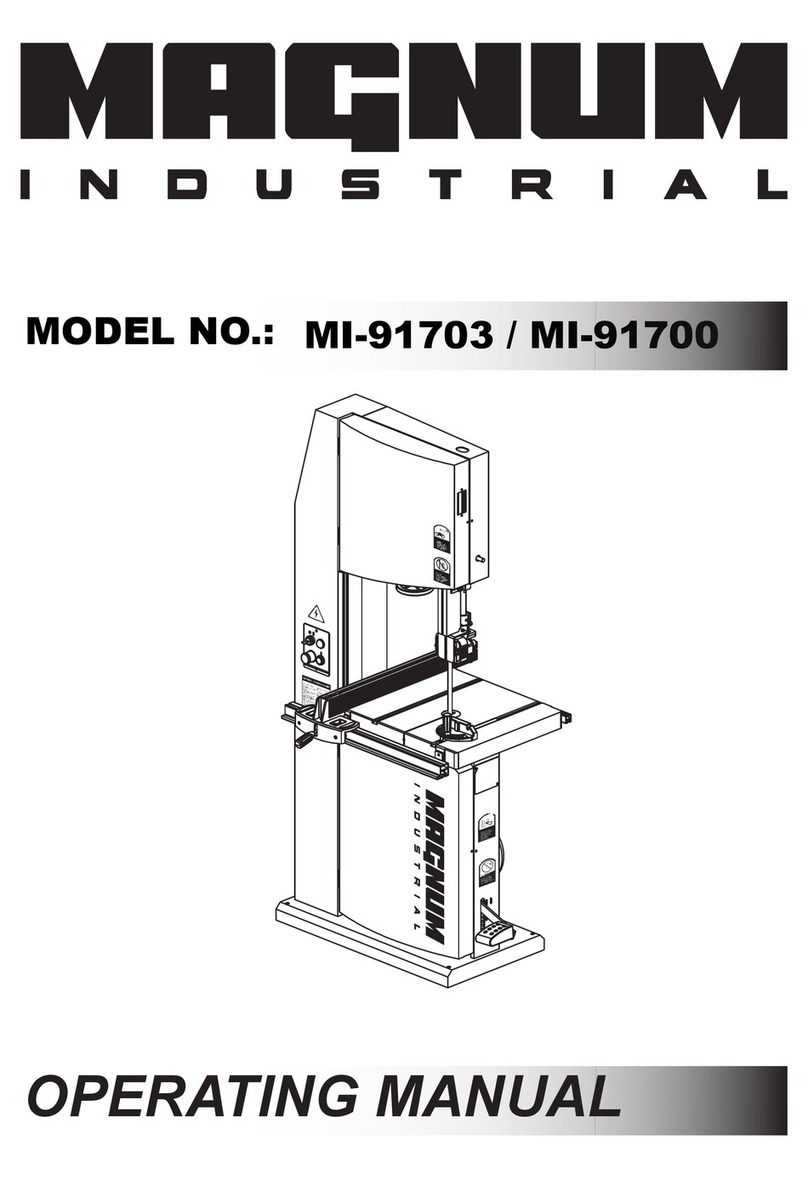SNOWJOE sunjoe 24V-MPSWVG-LTE-RM User manual

© 2022 by Snow Joe®, LLC
All rights reserved. Original instructions. SAVE THESE INSTRUCTIONS
A Division of Snow Joe®, LLC
OPERATOR’S MANUAL
Model 24V-MPSWVG-LTE-RM Form No. SJ-24V-MPSWVG-LTE-RM-880E-M-V1
R
CORDLESS HANDHELD
RECIPROCATING SAW
24V MAX* | 2.0 Ah | 4 CUTTING BLADES

© 2022 by Snow Joe®, LLC
All rights reserved. Original instructions. SAVE THESE INSTRUCTIONS
1
A Division of Snow Joe®, LLC
OPERATOR’S MANUAL
Model 24V-MPSWVG-LTE-RM Form No. SJ-24V-MPSWVG-LTE-RM-880E-M-V1
R
CORDLESS HANDHELD
RECIPROCATING SAW
24V MAX* | 2.0 Ah | 4 CUTTING BLADES
IMPORTANT!
Safety Instructions
All Operators Must Read These
Instructions Before Use
Read all safety warnings, instructions, illustrations and
specications provided with this power tool. Failure to
follow all instructions listed below may result in electric shock,
re and/or serious injury.
General Safety WARNINGS!
Notice the personal safety alert symbol m used in this manual
to draw your attention to a WARNING given along with the
particular operating instruction. This means that the operation
requires special ATTENTION, CAUTION, and AWARENESS.
mWARNING! This unit can be dangerous! Careless or
improper use can cause serious injury.
mWARNING! The cutting blade can cut you. Keep hands
and feet away from the blade and the cutting area.
Retain this manual for future reference.
• Avoid accidental starting.
• When the tool is not in use, keep it away from other metal
objects.
• Before operating the tool, read the entire manual carefully
and make sure you know how to switch the tool OFF in an
emergency.
Work Area Safety
1. Keep work area clean and well lit. Cluttered and dark
areas invite accidents.
2. Do not operate power tools in explosive atmospheres,
such as in the presence of ammable liquids, gases or
dust. Power tools create sparks which may ignite the dust
or fumes.
3. Keep children and bystanders away while operating a
power tool. Distractions can cause you to lose control.
Personal Safety
1. Stay alert, watch what you are doing and use common
sense when operating a power tool. Do not use a
power tool while you are tired or under the inuence of
drugs, alcohol or medication. A moment of inattention
while operating power tools may result in serious personal
injury.
2. Use personal protective equipment. Always wear eye
protection. Protective equipment such as dust mask,
non-skid safety shoes, hard hat, or hearing protection
used for appropriate conditions will reduce personal
injuries.
3. Prevent unintentional starting. Ensure the switch is in
the o-position before connecting to power source
and/or BATTERY pack, picking up or carrying the
tool. Carrying power tools with your nger on the switch
or energising power tools that have the switch on invites
accidents.
4. Remove any adjusting key or wrench before turning
the power tool on. A wrench or a key left attached to
a rotating part of the power tool may result in personal
injury.
5. Do not overreach. Keep proper footing and balance at
all times. This enables better control of the power tool in
unexpected situations.
6. Dress properly. Do not wear loose clothing or
jewellery. Keep your hair, clothing and gloves away
from moving parts. Loose clothes, jewellery or long hair
can be caught in moving parts.
7. If devices are provided for the connection of dust
extraction and collection facilities, ensure these are
connected and properly used. Use of dust collection can
reduce dust-related hazards.
8. Do not let familiarity gained from frequent use of tools
allow you to become complacent and ignore tool
safety principles. A careless action can cause severe
injury within a fraction of a second.
Power Tool Use and Care
1. Do not force the power tool. Use the correct power
tool for your application. The correct power tool will
do the job better and safer at the rate for which it was
designed.
2. Do not use the power tool if the switch does not turn it
on and o. Any power tool that cannot be controlled with
the switch is dangerous and must be repaired.

2
3. Remove the battery pack from the power tool before
making any adjustments, changing accessories, or
storing power tools. Such preventive safety measures
reduce the risk of starting the power tool accidentally.
4. Store idle power tools out of the reach of children and
do not allow persons unfamiliar with the power tool
or these instructions to operate the power tool. Power
tools are dangerous in the hands of untrained users.
5. Maintain power tools and accessories. Check for
misalignment or binding of moving parts, breakage
of parts and any other condition that may aect the
power tool’s operation. If damaged, have the power
tool repaired before use. Many accidents are caused by
poorly maintained power tools.
6. Keep cutting tools sharp and clean. Properly maintained
cutting tools with sharp cutting edges are less likely to
bind and are easier to control.
7. Use the power tool, accessories and tool bits etc.
in accordance with these instructions, taking into
account the working conditions and the work to be
performed. Use of the power tool for operations dierent
from those intended could result in a hazardous situation.
8. Keep handles and grasping surfaces dry, clean and
free from oil and grease. Slippery handles and grasping
surfaces do not allow for safe handling and control of the
tool in unexpected situations.
Battery Tool Use And Care
1. Recharge only with the charger specied by the
manufacturer. A charger that is suitable for one type
of battery pack may create a risk of re when used with
another battery pack.
2. Use power tools only with specically designated
battery packs. Use of any other battery packs may create
a risk of injury and re.
3. When battery pack is not in use, keep it away from
other metal objects, like paper clips, coins, keys, nails,
screws or other small metal objects, that can make a
connection from one terminal to another. Shorting the
battery terminals together may cause burns or a re.
4. Under abusive conditions, liquid may be ejected from
the battery; avoid contact. If contact accidentally
occurs, ush with water. If liquid contacts eyes,
additionally seek medical help. Liquid ejected from the
battery may cause irritation or burns.
5. Do not use a battery pack or tool that is damaged or
modied. Damaged or modied batteries may exhibit
unpredictable behaviour resulting in re, explosion or risk
of injury.
6. Do not expose a battery pack or tool to re or
excessive temperature. Exposure to re or temperature
above 245 °F (130 °C) may cause explosion.
7. Follow all charging instructions and do not charge the
battery pack or tool outside the temperature range
specied in the instructions. Charging improperly or at
temperatures outside the specied range may damage the
battery and increase the risk of re.
Service
1. If your power tool requires service, contact an
authorized Snow Joe®+ Sun Joe®dealer or call the
Snow Joe®+ Sun Joe® customer service center at
1-866-SNOWJOE (1-866-766-9563). Only identical
replacement parts should be utilized for repairs. This will
ensure that the safety of the power tool is maintained.
2. If the battery charger cable is damaged, it must be
immediately replaced to avoid a hazard. Contact
the Snow Joe®+ Sun Joe®customer service center at
1-866-SNOWJOE (1-866-766-9563) for assistance.
Safety Instructions for Reciprocating
Saws
1. Hold the power tool by insulated gripping surfaces,
when performing an operation where the cutting
accessory may contact hidden wiring. Cutting
accessory contacting a ″live″ wire may make exposed
metal parts of the power tool ″live″ and could give the
operator an electric shock.
2. Use clamps or another practical way to secure and
support the workpiece to a stable platform. Holding the
workpiece by hand or against your body leaves it unstable
and may lead to loss of control.
Battery & Charger
Safety Instructions
We pay a great deal of attention to the design of every battery
pack to ensure that we supply you with batteries that are safe,
durable and have a high energy density. The battery cells have
a wide range of safety devices. Each individual cell is initially
formatted and its electrical characteristic curves are recorded.
This data is then used exclusively to be able to assemble the
best possible battery packs.
Despite all the safety precautions, caution must always be
exercised when handling batteries. The following points must
be obeyed at all times to ensure safe use. Safe use can only
be guaranteed if undamaged cells are used. Incorrect handling
of the battery pack can cause cell damage.
IMPORTANT! Analyses conrm that incorrect use and poor
care of high-performance batteries are the main factors
responsible for personal and/or product damage.
mWARNING! Use only approved replacement batteries;
other batteries may damage the power tool and cause it to
malfunction, which can lead to serious personal injury.
mWARNING! Do not use a battery pack or appliance that
is damaged or modied. Damaged or modied batteries may
exhibit unpredictable behavior resulting in re, explosion or risk
of injury.
Do not modify or attempt to repair the appliance or the battery
pack except as indicated in the instructions for use and care.

3
Have your battery pack serviced by a qualied repair person
using only identical replacement parts. This will ensure that the
safety of the battery pack is maintained.
mCAUTION! To reduce the risk of injury, charge the
Sun Joe®24V lithium-ion battery pack only in its designated
Sun Joe® lithium-ion charger. Other types of chargers present
risk of re, personal injury and damage. Do not wire a battery
pack to a power supply plug or car cigarette lighter. Such
misuse will permanently disable or damage the battery pack.
• Avoid dangerous environments – Do not charge the
battery pack in rain, snow or in damp or wet locations.
Do not use the battery pack or charger in the presence of
explosive atmospheres (gaseous fumes, dust or ammable
materials) because sparks may be generated when inserting
or removing the battery pack, which could lead to a re.
• Charge in a well-ventilated area – Do not block the
charger vents. Keep them clear to allow for proper
ventilation. Do not allow smoking or open ames near a
charging battery pack. Vented gases may explode.
NOTE: The safe temperature range for the battery is 41°F –
105ºF (5°C – 40.5°C). Do not charge the battery outside in
freezing weather; charge it at room temperature.
• Maintain charger cord – When unplugging the charger, pull
the plug, not the cord, from the receptacle to reduce the
risk of damage to the electrical plug and cord. Never carry
the charger by its cord or yank it by the cord to disconnect
it from the receptacle. Keep the cord away from heat, oil
and sharp edges. Make sure the cord will not be stepped
on, tripped over or subjected to damage or stress when the
charger is in use. Do not use the charger with a damaged
cord or plug. Replace a damaged charger immediately.
• Do not use an extension cord unless it is absolutely
necessary – Using the wrong, damaged or improperly
wired extension cord poses a risk of re and electric shock.
If an extension cord must be used, plug the charger into a
properly wired 16 gauge or larger extension cord with the
female plug matching the male plug on the charger. Make
sure that the extension cord is in good electrical condition.
• Charger (XZ2600-0450) is rated for 100 – 240 volt AC
only – The charger must be plugged into an appropriate
receptacle.
• Use only recommended attachments – Use of an
attachment not recommended or sold by the battery
charger or battery pack manufacturer may result in risk of
re, electric shock or personal injury.
• Unplug charger when not in use – Make sure to
disconnect battery pack from unplugged charger.
mWARNING! To reduce the risk of electric shock,
always unplug the charger before performing any cleaning
or maintenance. Do not allow water to ow into the charger.
Use a Ground Fault Circuit Interrupter (GFCI) to reduce shock
hazards.
• Do not burn or incinerate battery pack – Battery pack
may explode, causing personal injury or damage. Toxic
fumes and materials are created when battery packs are
burned.
• Do not crush, drop or damage battery pack – Do not use
the battery pack or charger if they have sustained a sharp
blow, been dropped, run over or have been damaged in any
way (i.e. pierced with a nail, hit with a hammer, stepped on,
etc.).
• Do not disassemble – Incorrect reassembly may pose
a serious risk of electric shock, re or exposure to toxic
battery chemicals. If the battery or charger are damaged,
contact an authorized Snow Joe®+ Sun Joe®dealer or
call the Snow Joe®+ Sun Joe®customer service center at
1-866-SNOWJOE (1-866-766-9563) for assistance.
• Battery chemicals cause serious burns – Never let a
damaged battery pack contact the skin, eyes or mouth.
If a damaged battery pack leaks battery chemicals, use
rubber or neoprene gloves to safely dispose of it. If skin
is exposed to battery uids, wash the aected area with
soap and water and rinse with vinegar. If eyes are exposed
to battery chemicals, immediately ush with water for 20
minutes and seek medical attention. Remove and dispose
of contaminated clothing.
• Do not short circuit – When battery pack is not in use,
keep it away from other metal objects, like paper clips,
coins, keys, nails, screws or other small metal objects
that can make a connection from one terminal to another.
Shorting the battery terminals together may cause burns or
a re.
• Store your battery pack and charger in a cool, dry
place – Do not store the battery pack or charger where
temperatures may exceed 105ºF (40.5ºC), such as in direct
sunlight or inside a vehicle or metal building during the
summer.
Information about the battery
1. The battery pack supplied with your cordless power tool is
only partially charged. The battery pack has to be charged
completely before you use the tool for the rst time.
2. For optimum battery performance, avoid low discharge
cycles by charging the battery pack frequently.
3. Store the battery pack in a cool place, ideally at 77°F
(25°C) and charged to at least 40%.
4. Lithium-ion batteries are subject to a natural aging
process. The battery pack must be replaced at the latest
when its capacity falls to just 80% of its capacity when
new. Weakened cells in an aged battery pack are no
longer capable of meeting the high power requirements
needed for the proper operation of your cordless
reciprocating saw, and therefore pose a safety risk.
5. Do not throw the battery pack into an open re as this
poses a risk of explosion.
6. Do not ignite the battery pack or expose it to re.

4
7. Do not exhaustively discharge batteries. Exhaustive
discharge will damage the battery cells. The most
common cause of exhaustive discharge is lengthy storage
or non-use of partially discharged batteries. Stop working
as soon as the performance of the battery falls noticeably
or the electronic protection system triggers. Place the
battery pack in storage only after it has been fully charged.
8. Protect the battery and the tool from overloads. Overloads
will quickly result in overheating and cell damage inside
the battery housing even if this overheating is not apparent
externally.
9. Avoid damage and shocks. Immediately replace batteries
that have been dropped from a height of more than
3 feet (1 meter) or those that have been exposed to violent
shocks, even if the housing of the battery pack appears to
be undamaged. The battery cells inside the battery may
have suered serious damage. In such instances, please
read the waste disposal information for proper battery
disposal.
10. If the battery pack suers overloading and overheating,
the integrated protective cuto will switch o the
equipment for safety reasons.
IMPORTANT! Do not press the ON/OFF trigger switch any
more if the protective cut-o has been activated. This may
damage the battery pack.
11. Recharge only with the charger specied by the
manufacturer. A charger that is suitable for one type of
battery pack may create a risk of re when used with
another battery pack.
12. Use appliances only with specically designated battery
packs. Use of any other battery packs may create a risk of
injury and re.
13. Under abusive conditions, liquid may be ejected from
the battery; avoid contact. If contact accidentally occurs,
ush with water. If liquid contacts eyes, additionally seek
medical help. Liquid ejected from the battery may cause
irritation or burns.
14. Do not use a battery pack or appliance that is damaged
or modied. Damaged or modied batteries may exhibit
unpredictable behavior resulting in re, explosion or risk of
injury.
15. Do not expose a battery pack or appliance to re or
excessive temperature. Exposure to re or temperature
above 265ºF (130°C) may cause explosion.
16. Follow all charging instructions and do not charge the
battery pack or appliance outside of the temperature
range specied in the instructions. Charging improperly
or at temperatures outside of the specied range may
damage the battery and increase the risk of re.
Information about the charger and the
charging process
1. Please check the data marked on the rating plate of the
battery charger. Be sure to connect the battery charger
to a power supply with the voltage marked on the rating
plate. Never connect it to a dierent mains voltage.
2. Protect the battery charger and its cord from damage.
Keep the charger and its cord away from heat, oil and
sharp edges. Have damaged cords repaired without delay
by a qualied technician at an authorized Snow Joe®+
Sun Joe®dealer or call the Snow Joe®+ Sun Joe®
customer service center at 1-866-SNOWJOE
(1-866-766-9563).
3. Electrical plugs must match the outlet. Never modify
the plug in any way. Do not use any adapter plugs with
grounded appliances. Unmodied plugs and matching
outlets will reduce the risk of electric shock.
4. Keep the battery charger, battery pack and the cordless
tool out of the reach of children.
5. Do not use the supplied battery charger to charge other
cordless tools.
6. During periods of heavy use, the battery pack will become
warm. Allow the battery pack to cool to room temperature
before connecting with the charger to recharge.
7. Do not overcharge batteries. Do not exceed the maximum
charging times. These charging times only apply to
discharged batteries. Frequent insertion of a charged or
partially charged battery pack will result in overcharging
and cell damage. Do not leave batteries in the charger for
days on end.
8. Never use or charge the battery if you suspect that it has
been more than 12 months since the last time they were
charged. There is a high probability that the battery pack
has already suered dangerous damage (exhaustive
discharge).
9. Charging batteries at a temperature below 41°F (5°C) will
cause chemical damage to the cells and may cause a re.
10. Do not use batteries that have been exposed to heat
during the charging process, as the battery cells may have
suered dangerous damage.
11. Do not use batteries that have suered curvature or
deformation during the charging process or those that
exhibit other atypical symptoms (gassing, hissing,
cracking, etc.).
12. Never fully discharge the battery pack (maximum
recommended depth of discharge is 80%). A complete
discharge of the battery pack will lead to premature aging
of the battery cells.

5
Protection from environmental inuences
1. Wear suitable work clothes. Wear safety goggles.
2. Protect your cordless tool and the battery charger from
moisture and rain. Moisture and rain can cause dangerous
cell damage.
3. Do not use the cordless tool or the battery charger near
vapors and ammable liquids.
4. Use the battery charger and cordless tools only in dry
conditions and at an ambient temperature of 41ºF – 105°F
(5°C – 40.5°C).
5. Do not keep the battery charger in places where the
temperature is liable to reach over 105°F (40.5°C). In
particular, do not leave the battery charger in a car that is
parked in the sunshine.
6. Protect batteries from overheating. Overloads,
overcharging and exposure to direct sunlight will result
in overheating and cell damage. Never charge or work
with batteries that have been overheated – replace them
immediately, if possible.
7. Store the charger and your cordless tool only in dry
locations with an ambient temperature of 41ºF – 105°F
(5°C – 40.5°C). Store your lithium-ion battery pack in a
cool, dry place at a temperature of 77°F (25°C). Protect
the battery pack, charger and cordless tool from humidity
and direct sunlight. Only place fully charged batteries in
storage (charged to at least 40%).
8. Prevent the lithium-ion battery pack from freezing. Battery
packs that were stored below 32°F (0°C) for more than 60
minutes must be discarded.
9. When handling batteries, be wary of electrostatic charge.
Electrostatic discharges can damage the electronic
protection system and the battery cells. Avoid electrostatic
charging and never touch the battery poles.

6
Safety Symbols
The following table depicts and describes safety symbols that may appear on this product. Read, understand and follow all
instructions on this tool before attempting to assemble and operate.
READ THE OPERATOR'S
MANUAL(S) – Read, understand
and follow all instructions in the
user manual(s) before attempting
to assemble and operate.
SAFETY ALERT – Indicates a
precaution, a warning or a danger.
WARNING! Do not expose the
unit to rain or wet conditions.
Keep dry.
Symbols SymbolsDescriptions Descriptions
Only use battery charger indoors.
Risk of Injury. Use safety
glasses, hearing protection
and dust mask.
Keep bystanders a safe distance
away from the work area.
DANGER! Keep hands away from
blade.
Wear non-slip footwear that will
protect your feet and improve your
footing on slippery surfaces.
Wear safety gloves during
use to protect hands.
For indoor use only
Plus; Positive polarity Minus; Negative polarity

7
Know Your Handheld Reciprocating Saw
Read the owner’s manual and safety instructions carefully before operating cordless handheld reciprocating saw. Compare
the illustration below to the cordless handheld reciprocating saw in order to familiarize yourself with the location of the various
controls and adjustments. Save this manual for future reference.
1
R
234
5
6
7
89
10
11 12 13 14 15 16 18
17
1. Battery compartment
2. Handle grip
3. On/O switch
4. Safety lock button
5. Motor head
6. Clamp locking button
7. Blade locking ring
8. Guide plate
9. Branch jaw clamp
10. Wood cutting blade (2)
11. Metal cutting blade (2)
12. iON+ 24V lithium-ion battery
(24VBAT-LTE) featuring
exclusive EcoSharp®
technology
13. Charge socket
14. Push lock button (2)
15. Battery indicator
16. Push button for battery indicator
17. 24V iON+ lithium-ion charger
(XZ2600-0450)
18. Charger plug
Technical Data
Motor .............................................................................. 150 W
Battery Voltage* Max .................................................. 24V D.C.
Battery Capacity ............................................................. 2.0 Ah
Charger Input ................................................... 100 – 240 V AC,
50/60 Hz, 0.4 A
Charger Output ........................................ 26V DC 450 mA
Charge Time Max .......................................................... 5 hours
No Load Speed ......................................................... 2600 rpm
Stroke Length .................................................. 0.87 in. (20 mm)
Cutting Capacity Max .......................... Wood: 3.14 in. (80 mm)
Metal: 0.39 in. (10 mm)
Stroke per Minute ...................................................... 2600 spm
Net Weight ..................................................... 3.66 lbs (1.66 kg)
*Initial no-load voltage, when fully charged, peaks at 24 volts; nominal
voltage under typical load is 21.6 volts.

8
Unpacking
Carton Contents
• Handheld reciprocating saw with branch jaw clamp
• Wood cutting blades (2)
• Metal cutting blades (2)
• iON+ 24V lithium-ion battery
• iON+ 24V lithium-ion battery charger
• Manual with registration card
1. Carefully remove the cordless handheld reciprocating saw
and check to see that all of the above items are supplied.
2. Inspect the product carefully to make sure no breakage or
damage occurred during shipping. If you nd damaged or
missing parts, DO NOT return the unit to the store.
Please call the Snow Joe®+ Sun Joe®customer service
center at 1-866-SNOWJOE (1-866-766-9563).
NOTE: Do not discard the shipping carton and packaging
material until you are ready to use your new cordless
reciprocating saw. The packaging is made of recyclable
materials. Properly dispose of these materials in
accordance with local regulations.
IMPORTANT! The equipment and packaging material are not
toys. Do not let children play with plastic bags, foils or small
parts. These items can be swallowed and pose a suocation
risk!
Battery Pack Operation
The equipment is powered by a lithium-ion battery. The battery
pack is completely sealed and maintenance free.
Battery Charge Level Indicator
The battery pack is equipped with a push button for checking
the charge level. Simply press the push button to read o the
battery charge level from the LEDs of the battery indicator:
• All 3 level monitoring LEDs are lit: Battery charge level
is high.
• 2 level monitoring LEDs are lit: Battery charge level is
decreasing. Stop work as soon as possible.
• 1 level monitoring LED is lit: Battery is at. Stop work
IMMEDIATELY and charge the battery. Otherwise the
battery’s service life will be greatly shortened.
NOTE: If the charge level button does not appear to be
working, insert the charger and charge as needed.
NOTE: Immediately after using the battery pack, the charge
level button may display a lower charge than it will if checked
a few minutes later. The battery cells “recover” some of their
charge after resting.
Charger Operation
mWARNING! Charge only Sun Joe®24V lithium-ion
battery pack with its compatible Sun Joe®24V lithium-ion
charger. Other types of batteries may cause personal injury
and damage.
To reduce the risk of electric shock, do not allow water to ow
into the charger's AC/DC plug.
When to Charge the iON+ 24VBAT-LTE
Lithium-iON Battery
NOTE: The iON+ 24VBAT-LTE lithium-ion battery pack does
not develop a "memory" when charged after only a partial
discharge. Therefore, it is not necessary to run down the
battery pack before inserting the charger plug.
• Use the battery indicator lights to determine when to charge
your iON+ 24VBAT-LTE lithium-ion battery pack.
• You can "top-o" your battery pack's charge before starting
a big job or after a long day of use.
Charging the Battery
1. Push the push lock buttons on the battery to pull the
battery pack out from the battery compartment (Fig. 1).
Charge level button
The battery is at 30% capacity
and requires charging
The battery is at 60% capacity
and requires charging soon
The battery is at full capacity
Light IndicatorsLights

9
2. Check that the mains voltage is the same as that marked
on the rating plate of the battery charger. Then, plug the
charger adapter into an appropriate AC power outlet.
Connect the charger plug into the charge socket of the
battery to start charging (Fig. 2).
3. The battery will take approximately 5 hours to charge.
The battery indicator LEDs will twinkle and illuminate one
by one during the charging process. Unplug the charger
immediately when the 3 LEDs are all illuminated.
mCAUTION! FIRE HAZARD. When disconnecting the
charger from the battery, be sure to unplug the charger from
the outlet rst, then disconnect the charger from the battery.
mWARNING! This charger does not automatically
turn o when the battery is fully charged. Please take care
not to leave the battery plugged into the charger. Switch
o or unplug the charger at the mains when charging is
complete.
4. Timely recharging of the battery will help prolong the
battery's life. You must recharge the battery pack when
you notice a drop in the equipment's power.
IMPORTANT! Never allow the battery pack to become fully
discharged as this will cause irreversible damage to the
battery.
Assembly
mWARNING! Do not insert the battery if it is not
completely assembled or if any parts appear to be missing or
damaged. Use of a product that is not properly and completely
assembled or with damaged or missing parts could result in
serious personal injury.
Fitting/Changing the Blade
mCAUTION! Always wear heavy-duty gloves when
handling the cutting blade. Mount the blade very carefully
so as not to impair the safety and eciency of the tool. If in
doubt, contact an authorized Snow Joe®+ Sun Joe®dealer
or call the Snow Joe®+ Sun Joe®customer service center at
1-866-SNOWJOE (1-866-766-9563).
1. Switch o the reciprocating saw and remove the battery
before doing any work on the tool or the blade.
2. It's recommended to remove the branch jaw clamp before
assembly. Press the end of the clamp locking button and
at the same time pull out the branch jaw clamp from the
saw (Fig. 3).
3. Use one hand to rotate and hold the blade locking ring
counterclockwise, and using the other hand to insert the
selected blade in the blade holder. Release the blade
locking ring to lock the blade in place (Fig. 4).
R
Battery pack
Fig. 1
Push lock button
Fig. 2
Battery
indicators
Fig. 3
Branch
jaw clamp
Clamp locking button

10
4. Release the blade locking ring and make sure the blade is
securely locked by tugging on the blade a bit.
NOTE: The handheld reciprocating saw is equipped with
2 metal cutting blades and 2 wood cutting blades that
can t in the blade holder. Choose the blade based on the
specic need of the cutting job. Check instruction on page
11 for detail information on cutting blades and the material
they can cut.
5. Replace the branch jaw clamp if needed. Check the
instruction below about how to t the branch jaw clamp.
6. To remove the cutting blade, rotating and holding the
blade locking ring counterclockwise. At the same time pull
the cutting blade out of the blade holder.
Fitting the Branch Jaw Clamp
Based on the cutting job, the branch jaw clamp may be
needed to x the workpiece in place. Follow the instruction
below to t the branch jaw clamp.
1. Switch o the reciprocating saw and remove the battery
before doing any work on the tool or the blade.
2. Press and hold the end of the clamp locking button, the
front of the button will tilted up (Fig. 5).
3. At the same time, slide the jaw clamp along the side of the
guide plate and insert the top tab of the jaw clamp inside
the hole in the saw housing. The side tabs of the jaw
clamp should be in the slots along the side of the guide
plate (Fig. 5).
4. Release the clamp lock button. Make sure the clamp is
locked securely by tugging on it.
NOTE: The branch jaw clamp should be locked in place
and cannot be pulling out without pressing the locking
button. However it should be able to pivoting up freely to
allow the blade cutting through the material (Fig. 6).
5. To remove the branch jaw clamp, press the end of the
clamp locking button and at the same time pull out the
branch jaw clamp from the saw (Fig. 3).
Operation
mWARNING! Do not allow familiarity with products to
make you careless. Remember that a careless fraction of a
second is sucient to inict serious injury.
mWARNING! Always remove battery pack from your tool
when you are assembling parts, making adjustments, cleaning,
or when not in use. Removing battery pack will prevent
accidental starting that could cause serious personal injury.
mWARNING! Always wear eye protection with side
shields. Failure to do so could result in objects being thrown
into your eyes resulting in possible serious injury.
mWARNING! Do not use any attachments or accessories
not recommended by the manufacturer of this product. The
use of attachments or accessories not recommended can
result in serious personal injury.
IMPORTANT! The product is intended for purposes listed
below:
• Cutting all types of wood products (lumber, plywood,
panelling composition board, and hard wood).
• Cutting masonite and plastic.
• Cutting drywall.
• Cutting metals such as sheet steel, pipe, aluminum, brass,
and copper.
Any other use diering from the above mentioned applications
poses a serious hazard to the user and may damage both
the tool and your personal property. Improper use of the tool
will invalidate the warranty, relieve the manufacturer from all
liabilities. The user will consequently be liable for all and any
damage or injury to himself/herself or others.
R
Cutting blade
Fig. 4
Blade locking ring
Clamp locking
button
Fig. 5
Branch jaw clamp
Top tab Side tabs
Guide plate
R
Fig. 6

11
Selecting Blades
Selecting the correct blade type is important in order to obtain
the best performance of the saw. Select the blade based on
the application and on the material you wish to cut. Selecting
the right blade will give you a smoother, faster cut and prolong
the life of the blade.
Blades with fewer teeth are typically used for cutting wood,
while blades with more teeth are better for cutting metal or
plastic. We recommend 14 TPI for plastics and soft metals and
18 TPI for hard metals. Check the table below for details about
the included blades.
Starting and Stopping
1. Ensure the blade and the branch jaw clamp (if used)
are securely assembled. Insert the battery in the battery
compartment (Fig. 7).
2. To start the tool, rst press and hold the safety lock
button, then squeeze the On/O trigger (Fig. 8). When the
machine is running, release the safety lock button.
NOTE: The safety lock button, located on the handle
above the On/O trigger, reduces the possibility of
accidental starting.
3. To turn o the tool, release the On/O switch.
Using the Branch Jaw Clamp
The branch jaw clamp will grip the workpiece, providing cutting
of unsupported workpiece. When cutting wider branches
or timber, the branch jaw clamp can be removed to obtain
a deeper cutting capacity. In this case, use a clamp/vise to
secure the workpiece in place.
NOTE: When the branch jaw clamp is attached, the cutting
capacity with wood blade will be reduced to 1.65 inch (42 mm)
The cutting capacity with metal blade will not be aected by
the branch jaw clamp.
To use the branch jaw clamp, place the saw on the workpiece
as shown (Fig. 9). Switch on the saw and push it against
the workpiece. The branch jaw clamp will help to guide the
equipment in a straight line.
7 TPI
Teeth
Size
Recommended
application
Wood Cutting
Blade (x2)
Metal Cutting
Blade (x2)
26 TPI
Length:
6 in. (152.5 mm)
Width:
0.77 in. (19.5 mm)
Thickness:
0.05 in. (1.2 mm)
Length:
4 in. (101.5 mm)
Width:
0.75 in. (19 mm)
Thickness:
0.035 in. (0.9 mm)
Contour cutting
in all woods,
and composition
materials.
All metals less
than 1/8". Tubing,
conduit and trim.
R
Battery pack
Fig. 7
R
On/O switch
Fig. 8 Safety lock button
R
Fig. 9
Workpiece
Branch jaw clamp

12
General Cutting Procedures
mWARNING! Cutting into electrical wiring can cause
the blade and the blade clamp to become electrically live. Do
not touch metal parts when cutting into a wall; grasp only the
insulated surfaces on the tool. Make sure hidden electrical
wiring, water pipes, and mechanical hazards are not in the
blade path when cutting into a wall.
mWARNING! Make sure the blade does not touch the
workpiece until the motor reaches full speed, since this could
cause loss of control resulting in serious injury.
• Secure the workpiece to a work bench or table with a
vise/clamps (Fig. 10). Or use the equipped branch jaw
clamp to secure the workpiece (Fig. 9).
•Mark the line of cut clearly.
• Make sure the saw blade teeth are clean of any debris or
foreign material.
• Hold the saw rmly in front of and clearly away from you.
• Press and hold the safety lock button, and squeeze the
On/O switch.
• Allow the saw blade to reach full cutting speed.
• Set the guide plate against the workpiece.
NOTE: The guide plate helps to stabilize the saw and even
the material that being cut. It can also reduce the vibration
of the saw signicantly.
• With slight pressure, move the blade into the workpiece.
NOTE: Do not force. Use only enough pressure to keep
the saw cutting. Let the blade and saw do the work.
Plunge Cutting
mWARNING! Blades longer than 6 in. can whip and
should not be used for plunge cutting. Failure to heed this
warning can result in serious personal injury.
mWARNING! DANGER OF KICKBACK!
mWARNING! Make sure the blade does not touch the
workpiece until the motor reaches full speed, since this could
cause loss of control resulting in serious injury.
• Before cutting, remove the branch jaw clamp.
• Rest the front edge of the guide plate on the workpiece
and hold it rmly in position during the cut (Fig. 11). The
guide plate will act like the fulcrum for deep cuts because
it raises the back end of the saw. Using the guide plate
like a pivot point allows you to go deep in the material with
precise control.
• Press and hold the safety lock button, and squeeze the
On/O switch.
• Allow the saw blade to reach full cutting speed.
• Tilt the saw until the tip of the blade starts cutting the
workpiece (Fig. 11).
• Allow the blade to penetrate the workpiece.
• Tilt the saw until the guide plate is resting on the material
and the blade is perpendicular to the workpiece (Fig. 12).
Metal Cutting
You may use the saw to cut metals such as sheet steel, pipe,
aluminum, brass, and copper with the equipped metal blade.
Pay attention to the following tips when metal cutting:
• Be careful not to twist or bend the saw blade.
• Do not force the tool and use a slow speed.
• Use cutting oil when cutting soft metals and steel. Cutting
oil also keeps the blades cool, increases cutting action,
and prolongs blade life.
R
Fig. 10
R
Fig. 11
WORKPIECE
Guide plate
Touching
the
workpiece
Tilt
R
Fig. 12

13
• Never use gasoline since normal sparking of motor could
ignite fumes.
• Clamp the workpiece rmly to eliminate any vibration of
the work. When cutting conduit pipe or angle iron, clamp
the workpiece in a vise if possible and cut close to the
vise. To cut thin sheet material, “sandwich” the material
between hardboard or plywood and clamp the layers to
eliminate vibration and material tearing.
• Always keep rm pressure on the guide plate to hold it
securely against the workpiece.
Maintenance
mWARNING! Always switch the product o and remove
the battery before performing inspection, maintenance, and
cleaning work.
1. Keep all safety devices, air vents and the motor
housing free of dirt and dust as far as possible. Wipe
the equipment with a clean cloth or blow it down with
compressed air at low pressure.
2. It's recommended to clean the equipment immediately
every time after use. Use a moistened soft cloth to wipe
the plastic housing. Do not use solvents to clean it. Never
let any liquid get inside the tool; and never immerse any
part of the tool into any liquid.
mWARNING! Do not at any time let brake uids,
gasoline, petroleum-based products, penetrating oils, etc.,
come in contact with plastic parts. Chemicals can damage,
weaken or destroy plastic which can result in serious personal
injury.
3. Apply oil on the blade and rub the oil over the cutting
area.
4. Inspect the product before each use for worn and
damaged parts. Do not operate it if you nd broken and
worn parts.
Storage
When store the tool, proceed as follows:
• Remove the battery from the compartment.
• Clean the product as describe above.
• Store the tool with the battery and charger in a secure
and dry location out of reach of children. The storage
temperature must always remains in the range of 41°F
(5°C) to 104°F (40°C).
Disposal
Recycling the tool
• Do not dispose of electrical appliances as unsorted
municipal waste. Use separate collection facilities.
• Contact your local government agency for information
regarding the collection systems available.
• If electrical appliances are disposed of in landlls
or dumps, hazardous substances can leak into the
groundwater and get into the food chain, damaging your
health and well-being.
• When replacing old appliances with new ones, the retailer
is legally obligated to take back your old appliance for
disposal at least free of charge.
Recycling + Disposal
The product comes in a package that protects it against
damage during shipping. Keep the package until you are
sure that all parts have been delivered and the product is
functioning properly. Recycle the package afterwards or keep
it for long-term storage.
WEEE symbol. Waste electrical products should not
be disposed of with household waste. Please
recycle where facilities exist. Check with your local
authority or local store for recycling regulations.
Battery Caution + Disposal
Always dispose of your battery pack according to federal,
state, and local regulations. Contact a recycling agency in your
area for recycling locations.
mCAUTION! Even discharged battery packs contain
some energy. Before disposing, use electrical tape to cover
the terminals to prevent the battery pack from shorting, which
could cause a re or explosion.
mWARNING! To reduce the risk of injury or explosion,
never burn or incinerate a battery pack even if it is damaged,
dead or completely discharged. When burned, toxic fumes
and materials are emitted into the surrounding atmosphere.
1. Batteries vary according to device. Consult your manual
for specic information.
2. Install only new batteries of the same type in your product
(where applicable).
3. Failure to insert batteries in the correct polarity, as
indicated in the battery compartment or manual, may
shorten the life of the batteries or cause batteries to leak.
4. Do not mix old and new batteries.
5. Do not mix Alkaline, Standard (Carbon-Zinc) or
Rechargeable (Nickel Cadmium, Nickel Metal Hydride, or
Lithium-Ion) batteries.
6. Do not dispose of batteries in re.
7. Batteries should be recycled or disposed of as per state
and local guidelines.

14
Service + Support
If your Sun Joe®cordless handheld reciprocating saw requires
service or maintenance, please call the Snow Joe®+ Sun Joe®
customer service center at 1-866-SNOWJOE
(1-866-766-9563).
Model + Serial Numbers
When contacting the company or reordering parts, you will
need to provide the model and serial numbers of your product.
These are found on the decal axed to the housing or handle
of your cordless reciprocating saw. Copy these numbers into
the space provided below.
Record the following numbers from the housing or handle of your
new product: Model #:
Serial #:
2 4 V - M P S W V G - L T E - R M

15
Optional Accessories
mWARNING! ALWAYS use only authorized Snow Joe®+ Sun Joe® replacement parts and accessories. NEVER use
replacement parts or accessories that are not intended for use with this cordless reciprocating saw. Contact Snow Joe®+ Sun
Joe® if you are unsure whether it is safe to use a particular replacement part or accessory with your cordless reciprocating saw.
The use of any other attachment or accessory can be dangerous and could cause injury or mechanical damage.
iON+ 24V lithium-ion Battery Quick Charger
iON+ 24V lithium-ion Dual-port Battery Charger
24VBAT-LTE
24VCHRG-QC
24VBAT-LT
24VBAT
24VBAT-XR
ModelAccessories Item
1
2
3
4
5
6
7
8
24V iON+ 1.3 Ah Lithium-Ion Battery 24VBAT-LTW
24V iON+ 1.5 Ah Lithium-Ion Battery 24VBAT-LTX
24V iON+ 2.0 Ah Lithium-Ion Battery
24V iON+ 2.5 Ah Lithium-Ion Battery
24V iON+ 4.0 Ah Lithium-Ion Battery
24V iON+ 5.0 Ah Lithium-Ion Battery
24VCHRG-DPC
NOTE: Accessories are subject to change without any obligation on the part of Snow Joe®+ Sun Joe®to provide notice of such
changes. Accessories can be ordered online at sunjoe.com or via phone by contacting the Snow Joe®+ Sun Joe®customer
service center at 1-866-SNOWJOE (1-866-766-9563).

16
SNOW JOE®+ SUN JOE®REFURBISHED GOODS WARRANTY
GENERAL CONDITIONS:
Snow Joe®+ Sun Joe®operating under Snow Joe®, LLC warrants
this refurbished product to the original purchaser for 90 days
against defects in material or workmanship when used for normal
residential purposes. If a replacement part or product is needed,
it will be sent free of charge to the original purchaser except as
noted below.
The duration of this warranty applies only if the product is put to
personal use around the household. It is the owner’s responsibility
to correctly perform all maintenance and minor adjustments
explained in the owner’s manual.
HOW TO OBTAIN YOUR REPLACEMENT PART OR PRODUCT:
To obtain a replacement part or product, please visit
instructions. Please be sure to register your unit beforehand
to speed up this process. Certain products may require a serial
number, typically found on the decal afxed to the housing
or guard of your product. All products require a valid proof
of purchase.
EXCLUSIONS:
• Wearing parts like belts, augers, chains and tines are
not covered under this warranty. Wearing parts can be
purchased at snowjoe.com or by calling 1-866-SNOWJOE
(1-866-766-9563).
• Batteries are covered in full for 90-days from the date of
purchase.
Snow Joe®+ Sun Joe®may from time to time change the design of
its products. Nothing contained in this warranty shall be construed
as obligating Snow Joe®+ Sun Joe®to incorporate such design
changes into previously manufactured products, nor shall such
changes be construed as an admission that previous designs
were defective.
This warranty is intended to cover product defects only.
Snow Joe®, LLC is not liable for indirect, incidental or
consequential damages in connection with the use or misuse of
the Snow Joe®+ Sun Joe®products covered by this warranty.
This warranty does not cover any cost or expense incurred
by the purchaser in providing substitute equipment or service
during reasonable periods of malfunction or non-use of this product
while waiting for a replacement part or unit under this warranty.
Some states do not allow exclusions of incidental or consequential
damages so the above exclusions may not apply in all states. This
warranty may give you specic legal rights in your state.
HOW TO REACH US:
We’re here to help Monday through Friday from 9AM to 7PM EST
and Saturday and Sunday 9AM to 4PM. You can reach us at
1-866-SNOWJOE (1 866-766-9563), online at snowjoe/com, via
EXPORTS:
Customers who have purchased Snow Joe®+ Sun Joe®
products exported from the United States and Canada should
contact their Snow Joe®+ Sun Joe® distributor (dealer) to obtain
information applicable to your country, province or state. If for
any reason, you are not satised with the distributor’s service,
or if you have difculty obtaining warranty information, contact
your Snow Joe®+ Sun Joe®seller. If in the event your efforts are
unsatisfactory, please reach out to us directly.

17

18

sunjoe.com
Table of contents
Other SNOWJOE Saw manuals
